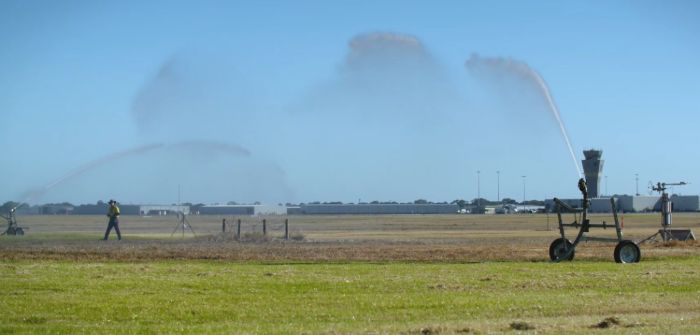Findings from an innovative world-first heat mitigation trial conducted by SA Water and Adelaide Airport in Australia will be shared with more than 1,000 delegates at ACI’s Airport Exchange, taking place from November 25-27 in Abu Dhabi.
The trial, which has been underway for three years at Adelaide Airport in South Australia, has found the smart use of water to maintain soil moisture and cultivate green space can reduce average ambient temperatures by more than 3°C (37.4°F) on warm days and potentially lower heat-influenced costs such as air conditioning and aircraft performance.
According to the concept’s creator, SA Water’s manager of environmental opportunities, Greg Ingleton, the methodology could lead to a sustainable reduction of an airport’s carbon footprint and be transferred to improving the liveability of cities around the world.
“The extensive hard surfaces and cleared land around airports means they can often become sources of increased heat, which impacts both terminal and airside operations,” Ingleton explained.
According to Adelaide Airport’s sustainability manager Leigh Gapp, the trial has the potential to benefit airline customers on hot days through reduced fuel burn, which in turn reduces the carbon emissions associated with take-off.
“Reducing the ambient temperature can also reduce terminal energy costs associated with cooling. We are continuing to explore both of these options,” Gapp added.
Recycled water from SA Water’s nearby reuse scheme was applied to four hectares of alfafa 600m (2,165ft) south of the airport’s runway, twice a week at night, to create the cooling effect, and also showed ability of the space to produce revenue-generating food crops.
“We’re also investigating the ability to create carbon credits from growing the crops, demonstrating carbon sequestration whereby the plants absorb CO2 and use it as fuel for growth by locking it in the soil,” Ingleton said.
“Our recent economic analysis, which was based on an expansion of the irrigation area to 200 hectares, suggests innovative initiatives like this can provide a range of operational efficiencies and wider benefits for airports, and we’re hoping these findings will turn a few heads.”


